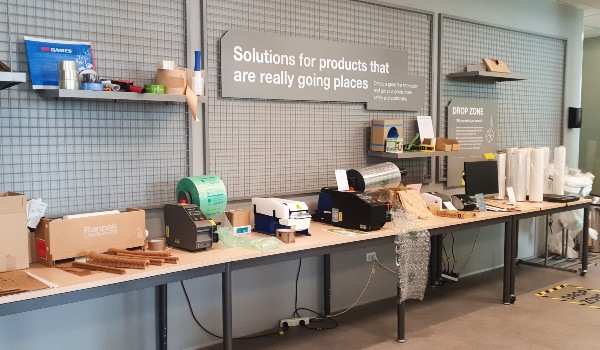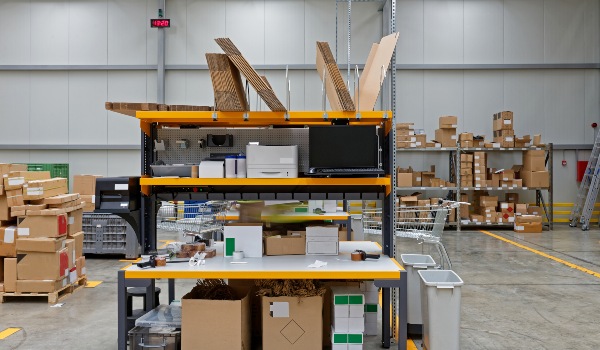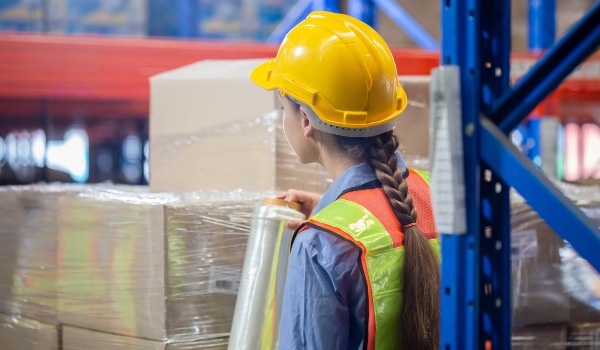The consequence of not choosing sustainable packaging options sooner rather than later can have long-term implications for the business.
Market research conducted by NZ Post reported that 72%* of the consumers wanted to see retailers offer environmentally conscious packaging and 35%* of the respondents said they wouldn't buy a product or service if the company was not environmentally committed.
The pitfalls of not acting now, in addition to losing customers to competitors, are the soaring cost of waste disposal, loss of reliability, brand reputation, and overall growth in a demanding market.
OfficeMax Packaging Specialist Brian Rowe has spent two decades in the industry. He has assisted his clients in choosing the right products based on their specific needs and achieving their packaging sustainability goals.

Brian suggests four ways to smartly manage costs and bring sustainable business practices to your warehouse.
1. Reuse your cardboard boxes as void fill:
The most common packaging item in our warehouse inventory is cardboard boxes. Whether we receive goods in them or pack and dispatch them to customers, they are abundant.
"99% of all cardboard received in the warehouse goes to cardboard bin for recycling, and there's a cost attached to it. Recycle trucks pick cardboard bins at least two to four times a month," says Brian.
Brian suggests getting a cardboard shredder machine to cut cardboard into small pieces. You can use these as void fill for your packages and boxes. This benefits you in two ways: it cuts down on your cardboard recycling cost from three to one time a month, and you don't have to shop for an additional void fill as you produce them sufficiently in your warehouse.

2. Create a mix of products:
Start small and create a balanced mix if cost does not allow you to go 100% on sustainable packaging products. Whether it's pallet wrap, air pillows for void fill, mailer bags, strapping rolls, or tapes, choose a mix of sustainable options made from recycled materials or can be recycled and regular ones.
Sustainable alternatives that can be added to your shopping list can be:
-
Pallet wrap made from 40% post-industrial recycled content. Once used, they can be collected and recycled to create another roll of wrap, thus reducing the amount going into landfills.
-
Air pillows made from 50% recycled plastic film, paper honeycomb, corrugated single-faced cardboards, etc.
-
Honeycomb padded mailer bags, envelopes made with 80% recycled plastic, and more.
-
Choose the sustainable packaging tape that meets your packaging needs, such as those made with recycled PET (from 30% to 100% recycled PET), cellulose tape that is 75% biodegradable, or gummed paper tapes that are water-activated.

3. Re-think your packaging station:
Sustainability also means using the existing packaging inventory efficiently to increase productivity and reduce waste – regardless of whether it goes to landfill or will be recycled.
Brian advises optimising the packaging process, redesigning the packaging floor, adding or reducing machinery, and trying newer or more efficient products. These can massively cut costs and reduce the strain of mess and wastage in the warehouse.
"Sometimes re-doing your packaging station, identifying gaps where products, machinery and manpower can be used more effectively can do wonders," says Brian.

4. It's time for a change:
It's the hard truth, but sometimes you need to do a makeover, buy that expensive machine, optimise your packing, or add some dollars to save you more in the long run.
"For example, say you have a pallet wrap machine that often breaks down, uses more material for the same load of goods, wrecks your pallet wrap rolls, or does not work at capacity with newer rolls, and you still fear it risks of not being a safe dispatch.
"Whether you like it or not, it's time to get a new one because it's affecting the productivity of your warehouse, is less efficient, expensive to manage, and less sustainable in all respects," Brian added.

Talk to a packaging specialist who can examine your tools, understand your business needs, and guide you in your quest to be more economical and sustainable.
*NZ Post's eCommerce Market Sentiments 2023 report